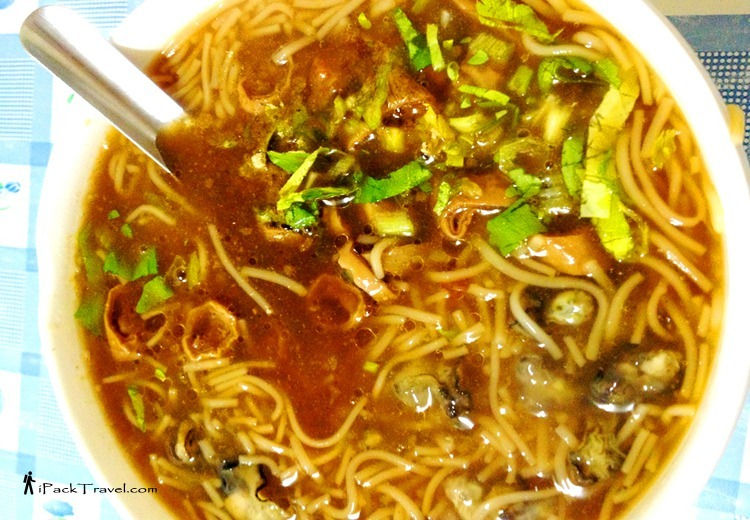
I am planning a trip to Taiwan this year to visit the outlying islands of Kinmen, Matsu, Penghu and/or Lanyu and will like to share my considerations for planning the trip — or trips. You are welcomed to share other considerations that I may have overlooked.
Public Holidays in Taiwan
With reference to this website (on timeanddate.com), the national holidays of Taiwan are as follow:
New Year's Day (1st Jan — already over)
Chinese New Year (16-20 Feb, Friday-Tuesday)
228 Memorial Day (28 Feb, Wednesday)
Children's Day (4 April, Wednesday)
Tomb Sweeping Day (5 April, Thursday)
Labour Day (1st May, Tuesday)
Dragon Boat Festival (18 Jun, Monday)
Mid-Autumn Festival (24 Sept, Monday)
National Day (10 Oct, Wednesday)
Notice that the Chinese New Year public holidays is 5 days — so avoid this period. The 15th day will be on 2nd March and is Lantern Day (observance only). Most Taiwanese tourists will flock to Shifen Old Street, in Pingxi District (平溪十分老街), to "fly" lanterns.
Children's Day and Tomb Sweeping Day (or Ching Ming Day) formed 2 days consecutive holidays. Noting that traffic is always congested around Ching Ming period in Singapore, Malaysia and China, Taiwan will probably be the same.
The rest of the holidays are dispersed evenly across the other months, averaging about one public holiday per month. And as most of them fall on weekdays, they will have little impacts to travel plans — just avoid popular places on those days and the period around 4-5 April.

Extremely packed night market in Hualien on "double-10" holiday in 2015. Took me 3 hours just to try 4 stalls.
However, the primary consideration for travelling in Taiwan is the weather, not so much of the public holidays. But I will still skirt around them.
The Climate
Beginning of the year is the winter season — a low-peak season for travelling. Unless you are planning to see grey landscapes and experience the cooling weather, it might not be an attractive time to visit Taiwan in January. But for shopping, visiting indoor museums and eating local food, January to mid-February may be better time to go.
May to June is the plum rain (梅雨) season with the highest rainfall of the year. Temperatures will also be at all-time high between June to August and what follows next is the typhoon season from July till October.

Exploring Fenchihu Old Town during the plum rain season in 2012.
Typhoons bring much destruction and flooding to East Asia every year. This is a time to avoid travelling to Taiwan — the land mass out in the South China Sea that fronts most of the typhoons. As this is a low-peak season for travelling, accommodations in Taiwan and flights tend to be dirt-cheap. Don't be tempted by promotions for this period unless you want to take chances with last-minute flight cancellations and hotel reservation forfeitures.
However, travel can still be done at the very last minute. Make reservations for flights on short notice after a typhoon has passed and the next one is not in sights. There will be abundance of hotel rooms to pick after touching down. But, if the last typhoon caused a lot of damages to streets and with floods, it will be a waste of time to travel there. Expect long rainy days too.
In December, the winter season starts again. Pray for it to snow somewhere, if not, there won't be attractive landscape to see — usually in the mountainous areas. In addition, winter season is the time when Taiwan experiences the worst air pollution as cold air traps pollutants within its own mountain ranges. This period is more for spending time indoors.
Best Travel Periods
The best time to travel in Taiwan will be in March and April, which is also the peak travel season. This period is best for checking out green pastures and blossoming of seasonal flowers, especially the cherry blossom season in March. Expect accommodations and flights to be expensive. And avoid 5th April Ching Ming period.

Sunflower field in Taiwan Poetry Road (台湾诗路), Yanshui, Tainan, in May 2012.
The month of May may be a hot and wet time to travel if you don't mind long, heavy rains. Flights and accommodations will be relatively cheaper since May is usually the start of the low travel season. Wet weather gears are musts.
End-October and November will also be good times to check out fall foliage in the mountains of Taiwan and probably some late agricultural harvests.
For shopping and eating local Taiwanese food only, May to June and November to mid-February are suitable times since the activities are mostly in cities and indoor. It is uneconomical to travel during the expensive season of March to April just to shop and eat.

Taiwanese oyster vermicelli, a popular local dish that is not-to-be-missed.
—
I shared about holidays and climate of Taiwan that affect travel planning in this post and had covered potential travel safety issues in Taiwan in an earlier article (see link below). I had done the 3 pre-planning checks that I shared before in Why is it necessary to plan for a trip?
The next homework will be to research on my travel destinations — the outlying islands, which may have different holidays/festivals, climatic conditions and travel concerns from the main island of Taiwan. I will share more after firming up my travel route.
Do you have other considerations? Share with me.
Before going, take some precautions:
Comments